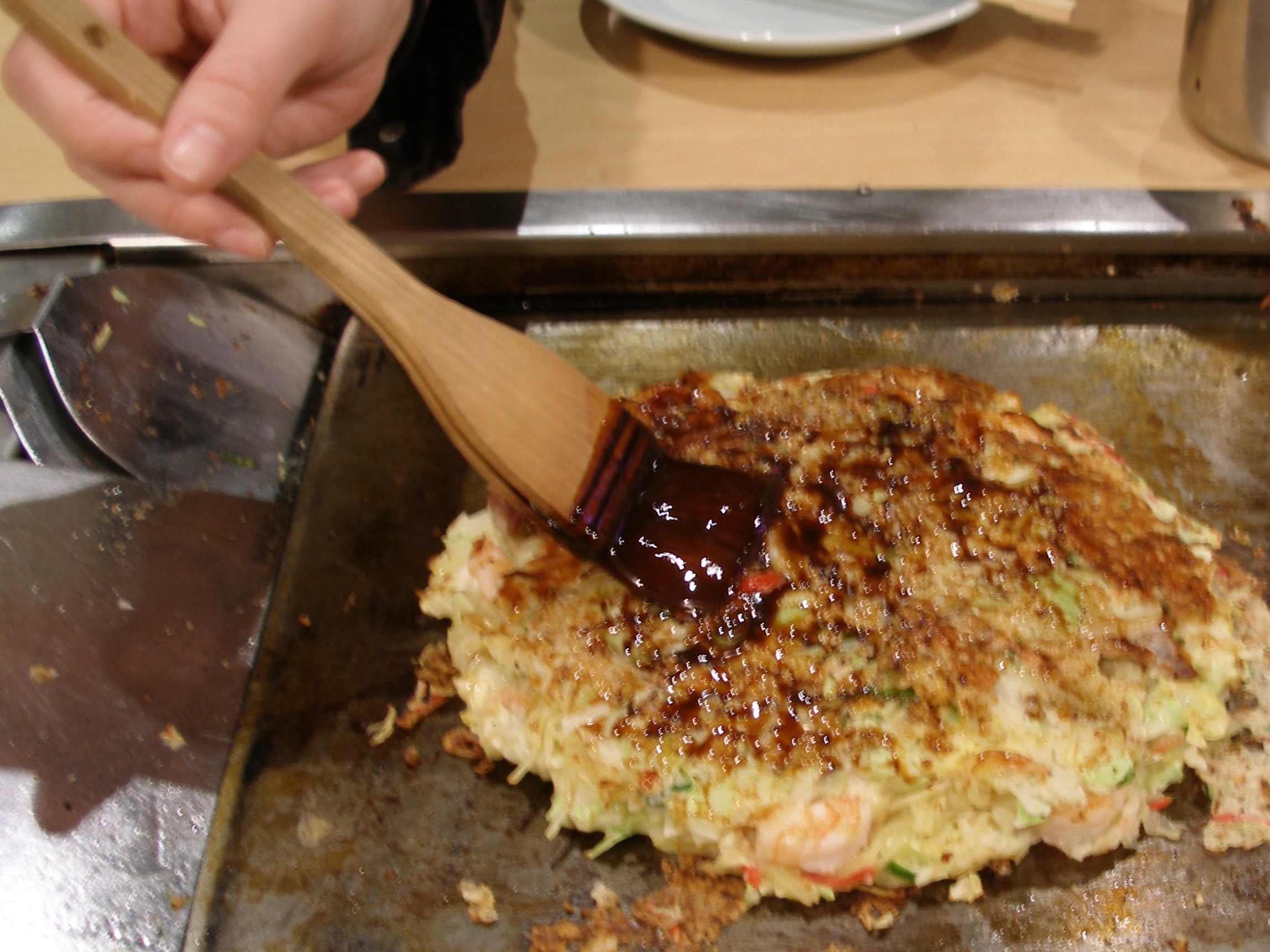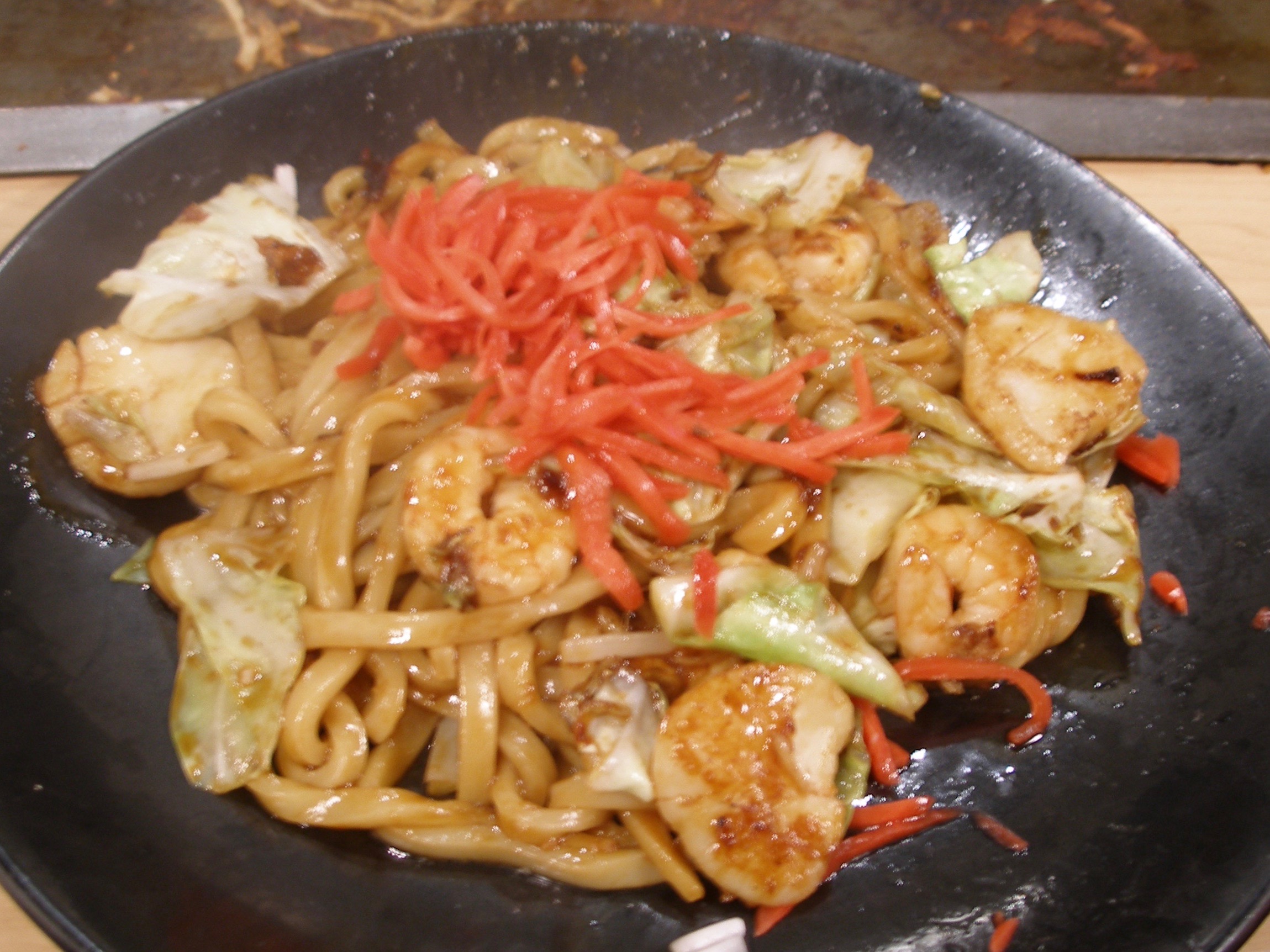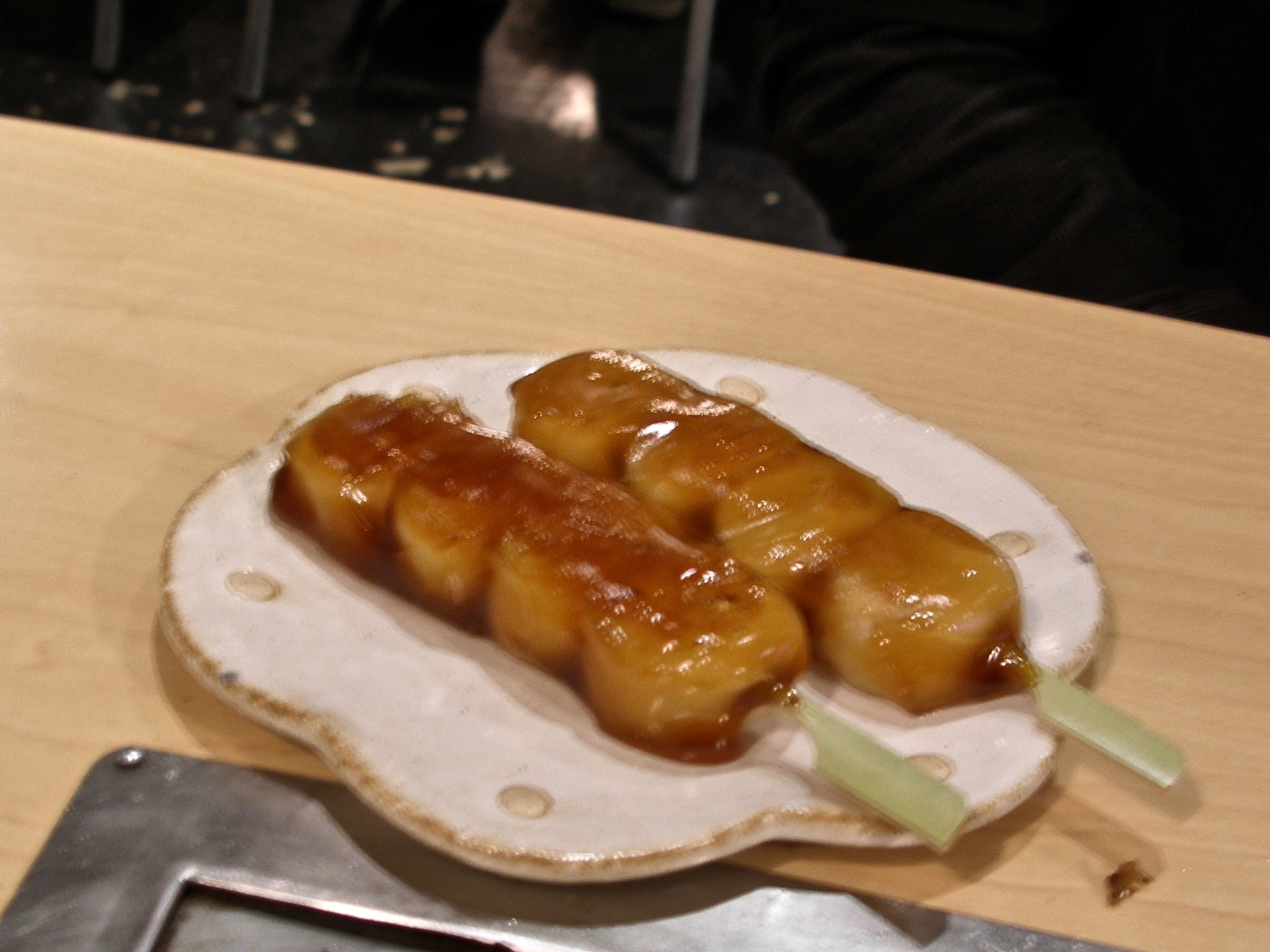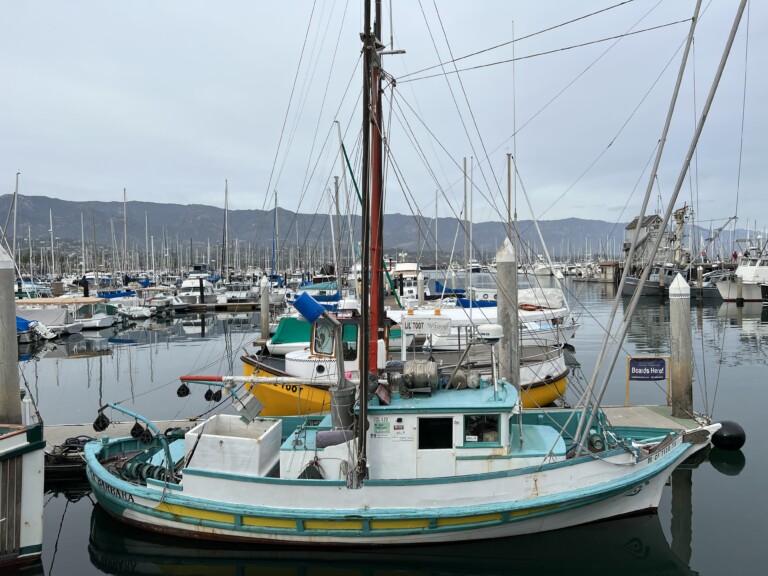I eat at five to eight new restaurants weekly in Los Angeles County, no cuisines barred. And I’ve been at it since January 1999. That’s a lot of restaurants. But considering a good percentage of the world’s ethnic cuisines are represented in L.A., I can still find original dining experiences. I recently had such a meal at Gaja OkonomiyakI, a Japanese restaurant in the desolate South Los Angeles neighborhood of Lomita.
Gaja is a fairly nondescript space that shares a mini-mall with a noodle parlor. A sushi bar’s across the street. Lomita isn’t far from the Port of Los Angeles or the North American Headquarters of Nissan and Toyota, in Gardena and Torrance, respectively. Thus the preponderance of area Japanese restaurants.
The Gaja menu is 40 pages long, listing everything from salads, crepes, fried rice, spaghetti soups, udon soups, risotto, yaki-soba, and monja-yaki, a thin pancake. Spicy cod roe, mushrooms, and curry are ubiquitous, as are more traditional meats, seafoods, and vegetables. Gaja even offers pizza, but in flavors you won’t find anywhere else (maybe for good reason): octopus and shrimp with mayonnaise, fermented bean and cheese, and spicy cod roe with mochi. There is also a long list of exotic drinks, both alcoholic and non-. The alcoholic beverages revolve around shochu, Japan’s distilled sake counterpart. Flavors include wasabi cucumber, bubble gum, and wheatgrass. Given those options, I chose water.
My friend and I didn’t need 40 pages to settle on okonomiyaki. The specialty of the house is featured on the restaurant’s door, business cards, and takes up a good chunk of the web address. Okonomiyaki is a kind of pancake that originated in Japan around 1935. Originally just flour and water, according to the company website, “Gradually, people began to put in other stuffings such as meat, egg, and sea foods. This became the general idea of the dish. Eventually, the original taste of adding mayonnaise to add more flavor to the plain taste of the okonomiyaki sauce was introduced by in 1946.” At Gaja, okonomiyaki is also known as “Japanese healthy pancake.”
The waiter recommended “modern mix” ($14.50) and gave us the choice of having us or them prepare it. Not wanting the rectangular griddle built into the center of the table (teppan) to go to waste, we chose to cook the okonomiyaki ourselves.
A bowl arrived filled with batter, topped with a cracked egg, red ginger, imitation crab, shrimp, pork, strips of squid, and vegetables. It was supposed to include octopus, but my friend has an aversion to eight-tentacled sea creatures. We were given laminated step-by-step instructions for “How to make MODERN style OKONOMIYAKI,” with accompanying photos for each step. The bottom of the sheet reads, “This is the GAJA way to make okonomiyaki. If you are an expert at it, enjoy your own style.” Since it was our first attempt at okonomiyaki, we hadn’t developed our own style yet, trusted the sheet. Here are the instructions:
1. Spread oil on teppan plate. Spread oil with spatula after the plate becomes hot.
2. Fry pork evenly ((Put some salt and pepper on pork))
3. Fry yakisoba and flavor it with sauce ((Use GAJA soup to untie the noodles))
4. Fry the base leaving 1/3 in the bowl next to 2 and 3.
5. Place the yakisoba on the okonomiyaki.
6. Place the fried pork on the okonomiyaki.
7. Pour the left over base on to the okonomiyaki.
8. Do not touch for 3-4 minute.Caution: GAJA style okonomiyaki uses a lot of grated yam so it will be soft.
9. Flip over the okonomiyaki using two spatula.
10. Do not touch for 3-4 minute
11. Flip it over one more time.
12. Put your choice of sauce on the okonomiyaki. ((We recommend you to put a lot of okonomiyaki sauce, mayonnaise, dried seaweed, dried bonita))
13. Enjoy.
There was a huge metal spatula, for flipping the pancake, along with two smaller metal spatulas for mixing the ingredients. We coated the grill with oil, then grilled the pork, shrimp and squid. Then we took 2/3 of the batter and loaded it onto the grill, like a pancake. We topped the pancake with all the grilled ingredients, then poured on the rest of the batter.
We flipped it once, then twice, and it was done, crispy on the outside.

We painted the pancake with okonomiyaki sauce, a sweetish homemade red soy sauce, but avoided mayo, seaweed, and dried fish flakes. It was really good, even better than expected.

Shrimp and scallop yaki-udon ($10.50) came with another laminated instruction sheet.
“How to make GAJA style CHOW MEIN & YAKI-UDON”
1. Spread oil on teppan. Spread oil after teppan becomes hot.
2. Fry meats, seafood and other food that may take time to cook.
3. Fry cabbage, bean sprout and other vegetable until it becomes soft.
4. Mix 2 and 3 and move it to the side.
5. Fry the noodles ((Use GAJA soup to untie the noodles))
6. Mix 4 and 5 and flavor with chow mein sauce.
7. Use your choice of sauce.
8. Enjoy.There was another disclaimer at the bottom of the sheet. “This is a GAJA way to make it. If you have your own way, please enjoy your way.”

We grilled the shrimp and sea scallops until they were caramelized, mixed them with cabbage, loaded on the udon noodles, and grilled it all until crusty.
FYI: Udon noodles and long, round, springy flour noodles. It was a very good dish, though not as unique as the okonomiyaki. We weren’t planning on trying dessert, but there were a couple choices just strange enough to end up on our table.

The first oddity was a red bean “fish” ($4). It was basically a fish-shaped Eggo, and a bland one at that, filled with hot red bean paste. I never thought I’d find a fish-shaped dessert I didn’t love, but amazingly, Gaja had it.

Mochi with sweet soy sauce ($3.50) turned out to be spongy rice cakes shaped like sea scallops. They were skewered and painted with a sweet orange sauce and had a strange, pasty texture I didn’t enjoy.
Thankfully, my friend and I didn’t drive an hour to eat red bean fish and heinous rice scallops. We came for the okonomiyaki, and on that count, Gaja delivered in a big way. Not only was the food delicious, it was fun to make. I will definitely return to Lomita to grill again.









Leave a Comment